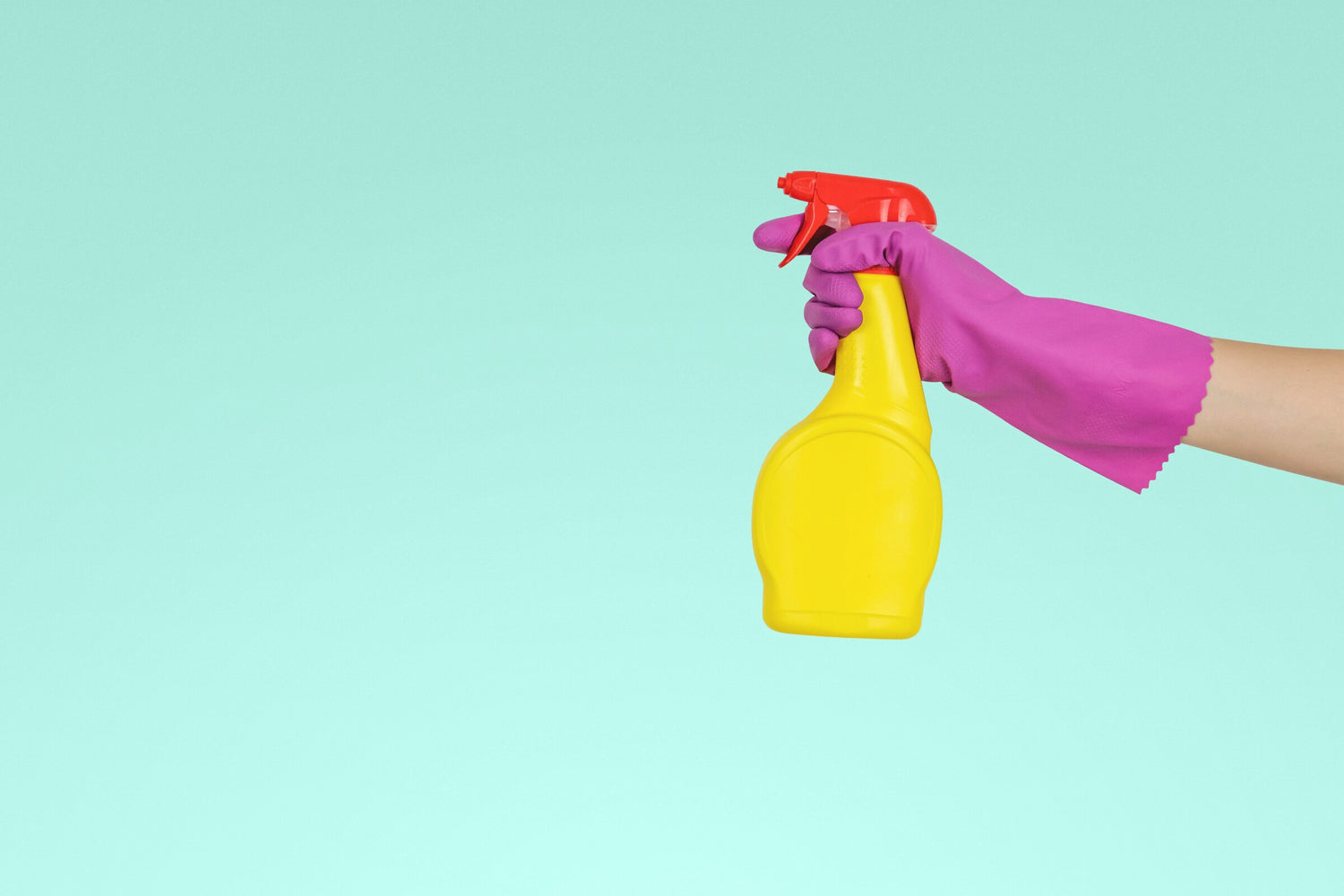Household products are widely associated with cleanliness, even purity. After all, it's done to clean up, to “take the nasty out,” right? This belief is in part the result of advertising and marketing strategies that for years have touted the almost surreal cleaning powers of cleansers.
Yet these products can have detrimental effects on our lives. Whether we are talking about health and longevity, quality of life or impact on the environment, we feel all the effects, especially in the long term. This is why it is important to choose the right cleaners and to avoid those made of toxic components.
Health impacts

Conventional household products can cause damage to our health, especially because of the toxic ingredients that compose them. Headaches, skin irritation, asthma and cancer are just some of the effects one can experience from using such cleansers.
A study has also shown that exposure to certain cleaning products has the effect, in the long term, of damaging our respiratory system in a way similar to the effects of cigarettes. This is due to the particles that are released into the air when using a vaporizer whose product contains toxic materials.
Unfortunately, the Consumer Chemicals and Containers Regulations to which manufacturers of household products in Canada are subject do not require companies to list all the ingredients of their products on the bottle and do not take into account the risks of exposure to long term to toxic substances.
With or without fragrance
Fragrances and perfumes in cleaning products can also be harmful to our health and even cause lung disease or asthma . By penetrating our lungs and skin, these fragrances can cause various reactions, ranging from headaches and dizziness to nausea or the provocation of cold-like symptoms, through shortness of breath and fatigue. Some people may also have allergic reactions to certain fragrances, including those found in natural products.

Part of the problem comes not from the smell as such of fragrances and perfumes, but rather from the chemicals used to produce said smell. Most perfumes are made up of 100 to 350 ingredients that, when vaporized into the air, permeate whatever they come into contact with: skin, hair, clothing, surfaces, etc. Diethyl phthalate is commonly used to prolong the life of fragrances and can cause allergic reactions such as contact dermatitis.
Using fragrance-free products may help you if you think you are experiencing some of the side effects associated with using scented products. That said, pay attention to the ingredient list on the bottle, as even so-called "unscented" products may contain fragrances that are intended to mask the flavor of other ingredients present in the product.
Cleansing powers of natural products

Yes, natural products clean just as well as chemical products, if you know which ones to choose and how to use them. For example, it is recommended to first clean the surface with soap and water, then apply the chosen disinfectant and let it sit for a period of time in order to get rid of the germs.
It's also best to avoid products that contain triclosan or other so-called "antibacterial" ingredients, as they promote the creation of superbugs . Acetic acid (white vinegar) or hydrogen peroxide are ingredients to prioritize, since they eliminate bacteria (and are easy to incorporate into homemade cleaners). Moreover, combining these two substances would make it possible to create a cleaner ten times more effective than other disinfectants, including bleach .
Environmental impacts

Household products containing chemicals and/or toxic components are not only harmful to humans, but also to the planet. On the one hand, when wastewater from the sink, bath or toilet is evacuated, it carries with it the remains of toxic products that could not be eliminated in the water treatment process, and end up in large bodies of water, thus harming the marine fauna found there. Disruption of the reproductive system of some species is one of the results of exposure of aquatic animals to polluted waters .
On the other hand, some ingredients have a slow rate of biodegradation, or worse, turn into even more toxic and persistent substances, posing a threat to marine life .
A guide to home cleaning

It can therefore be difficult to navigate when it comes time to choose and use your cleaning products. Here are some tips:
- Read the ingredient list carefully. Be on the lookout for potentially toxic ingredients, such as benzene, toluene, xylene, methanol, ethylbenzene and formaldehyde, carcinogens that can damage the nervous system. To help you find your way around, consult the “cleaning products” section of theEco-Consumption Network website .
- Pay attention to MSDS and pictograms. These indicate the presence of toxic materials. However, these sheets and pictograms must only inform consumers of the risks of immediate effects, and not of long-term effects.
- Opt for products made by companies that use components and processes that are safe for consumers. More and more companies are going above and beyond to be transparent with their consumers, not only by making products safe, but also by displaying the full list of ingredients they use, as The Unscented Company does . Ecologo or Green Seal certification are also good indicators that a product is not harmful to health.
- Make your own product . Failing to be able to find your account by buying prefabricated products, why not prepare your own mixtures? Several websites have recipes for all tastes.
- Avoid use when possible. If the option presents itself, choose to completely dispense with a product that could contain toxic materials. For example, swap out your fabric softener liquid for dryer balls . It is an economical solution that is just as effective, in addition to being better for your health.
- Open the windows. We spend a lot of our time indoors. If we use potentially toxic products to clean our living space (or for any other reason), particularly vaporizers, the particles can hover in the air for several minutes or even hours. One of the best ways to improve indoor air quality is to ventilate by opening windows.
The good news is that whichever you choose, you have plenty of options to switch from chemical products to more natural options that are better for your long-term health.

Reviewed by MF Editorial







Leave a comment
This site is protected by hCaptcha and the hCaptcha Privacy Policy and Terms of Service apply.